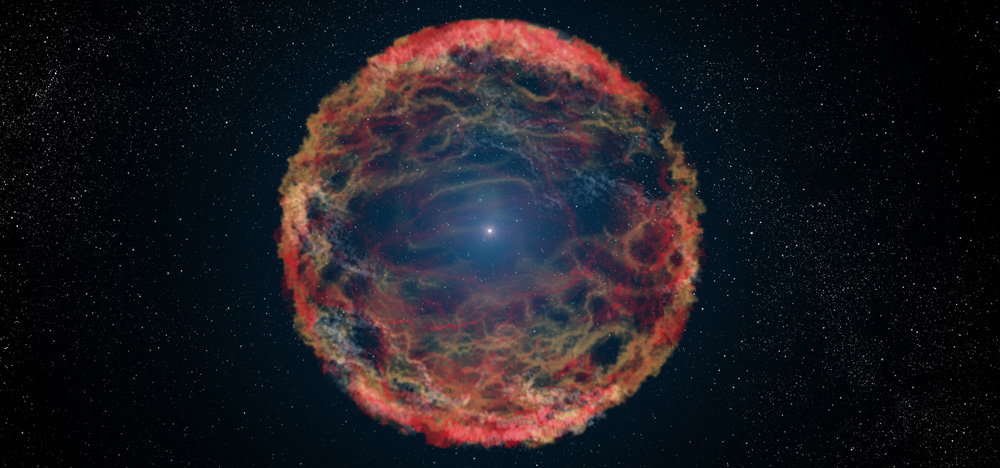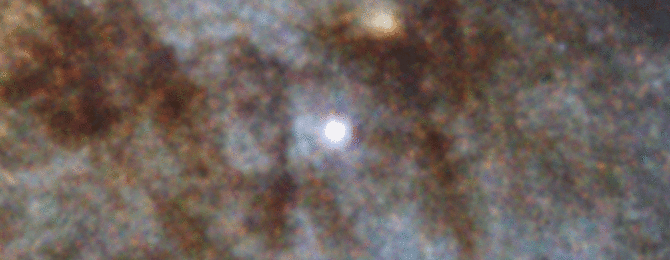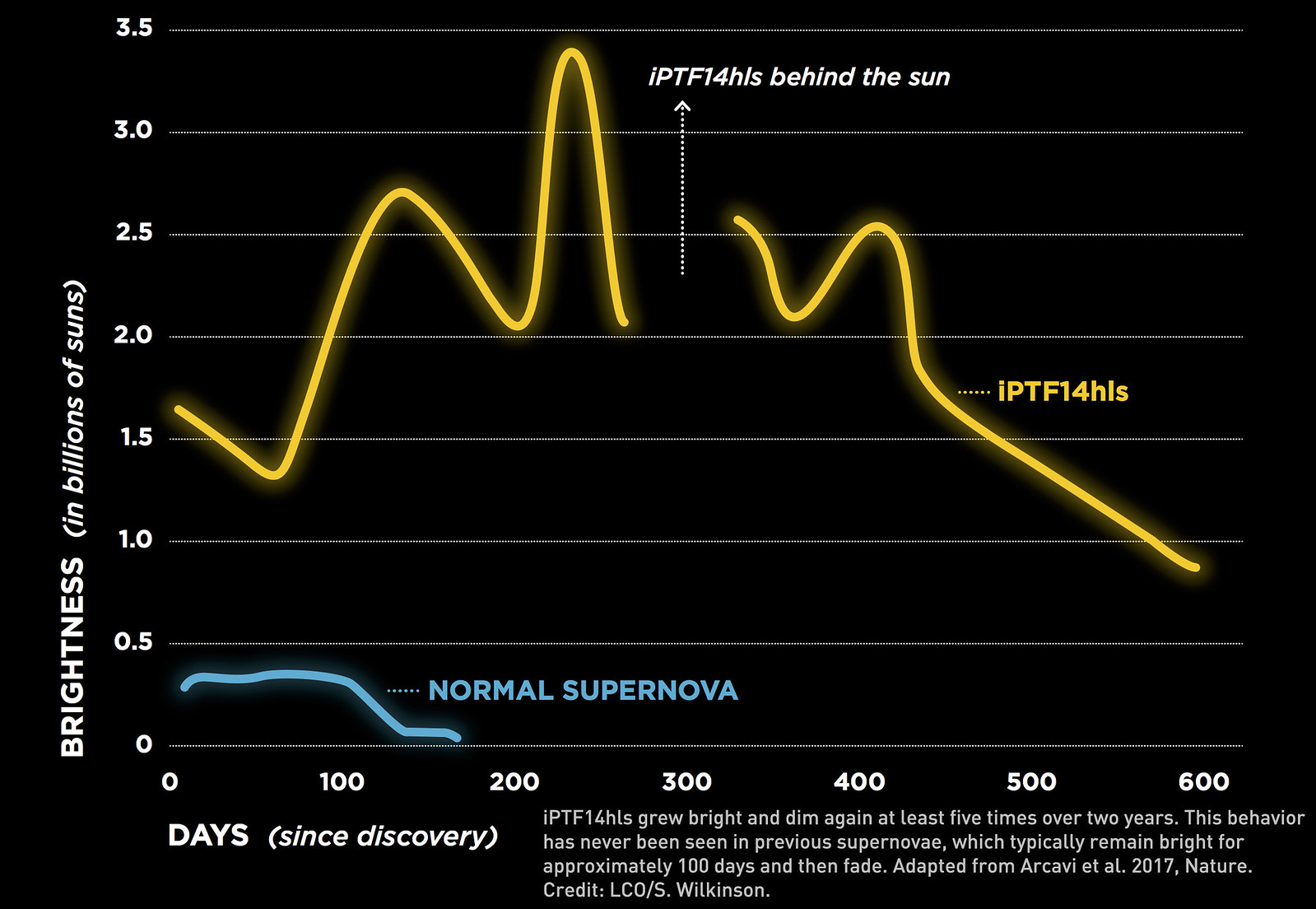Jupiter's x-ray auroras shine bright in new NASA images
Meteorologist/Science Writer
Thursday, November 9, 2017, 6:03 PM - See an amazing combo of Jupiter's X-ray auroras and beautiful imagery from NASA's Juno spacecraft, read about a strange star that apparently died twice, and check out an incredible view of a different exploding star captured by the Hubble Space Telescope! It's What's Up In Space!
Chandra looks at Jupiter's X-ray auroras
Take a look at the amazing image above.
That's a composite view, showing Jupiter, the largest planet in our solar system. The underlying part of the composite is the planet, as imaged by a camera on NASA's Juno spacecraft, which has been orbiting the gas giant since July 2016. The bright purple and white splotches show us the emission of X-rays from Jupiter's polar auroras.
Similar to hear on Earth, where high energy electrons and protons stream into the atmosphere at the poles, smack into atmospheric molecules and cause them to emit light, this same process happens at Jupiter - just MUCH MUCH more intensely. Thus, while Earth auroras produce mostly visible light (and heat), Jupiter's auroras emit high energy x-rays. We can't see them with normal telescopes, and Juno can't see them with its camera, but NASA's Chandra X-ray Observatory can easily seem them as it orbits Earth in space.
Watch the short NASA video, below, for the details on this amazing story, and the questions that still need to be answered:
(Image credit: X-ray: NASA/CXC/UCL/W.Dunn et al, Optical: South Pole Credits: NASA/JPL-Caltech/SwRI/MSSS/Gerald Eichstädt /Seán Doran North Pole Credit:NASA/JPL-Caltech/SwRI/MSSS)
The star that died (at least) twice!
There are some very strange stars out in space, but this one may force astronomers to rethink some of what we think we know about how stars die, because it didn't just die once, but twice!
When a massive star, several times larger than our Sun, gets older, its core becomes a layered sphere, as the weight of the star crushes larger and larger atoms together - with shells of hydrogen, helium, carbon, neon, oxygen, silicon, and finally iron at its very centre. When the central core fuses silicon into iron, though, that's it for the star. There is no way that the star can generate enough crushing force to fuse iron atoms together, and within the smallest fractions of a second, the star loses all of its support... it collapses in an instant, and the backlash of this blows the outer layers of the star into space, producing a supernova explosion that is eventually visible across the universe.

Artist’s impression of a Supernova. Credit: NASA/ESA/G. Bacon (STSci)
Another way that supernovae can be generated is when a white dwarf (the remnant of a Sun-like star) collects enough material from a large companion star to once again initiate fusion in it, which detonates the remnant, completely destroying it.
The common factor here is that the supernova happens JUST ONCE.
Here's something strange, though. Astronomers at California's Las Cumbres Observatory have discovered a star that has produced a supernova at least twice!
According to the Las Cumbres Observatory:
When the supernova, named iPTF14hls, was discovered in September of 2014 by the Palomar Transient Factory, it looked like an ordinary supernova. Several months later, LCO astronomers noticed something that they had never seen before - the supernova was growing brighter again after it had faded.
A normal supernova rises to peak brightness and fades over 100 days. Supernova iPTF14hls, on the other hand, grew brighter and dimmer at least five times over three years.When astronomers went back and looked at archival data, they were astonished to find evidence of an explosion in 1954 at the same location. This star somehow survived that explosion and exploded again in 2014.
It's estimated that the star which produced supernova iPTF14hls is at least 50 times more massive than the Sun, and the astronomers that discovered it believe that it may be the largest stellar explosion ever seen (which may go a long way to explaining its strange behaviour!).
"This supernova breaks everything we thought we knew about how they work," Iair Arcavi, a NASA Einstein postdoctoral fellow at LCO and the University of California Santa Barbara, who led the study of iPTF14hls, told Las Cumbres Observatory news. "It's the biggest puzzle I've encountered in almost a decade of studying stellar explosions."
Hubble tracks a stellar ripple
Ever stopped to watch ripples expand on a pond's surface, after a rock has been dropped in? Well, take a look at this:

Credit: NASA/ESA/Y. Yang (Texas A&M / Weizmann Institute of Science)
See that expanding ring, in the middle of the image? That's what's known as a Light Echo.
The initial bright pulse is a supernova in galaxy M82, roughly 11.4 million light years away. A massive star reached the end of its life (as detailed in the section above) and it exploded. The expanding ring is not material from the supernova, however. It's light, radiating away from the explosion over a period of 2+ years, and "bouncing off" clouds of gas in the galaxy.
According to HubbleSite.org:
A light echo occurs because light from the stellar blast travels different distances to arrive at Earth. Some light comes to Earth directly from the supernova blast. Other light is delayed because it travels indirectly. In this case, the light is bouncing off a huge dust cloud that extends 300 to 1,600 light-years around the supernova and is being reflected toward Earth.
This is only one of 15 light echoes ever spotted in nearby galaxies!
Sources: NASA | Las Cumbres Observatory | HubbleSite




